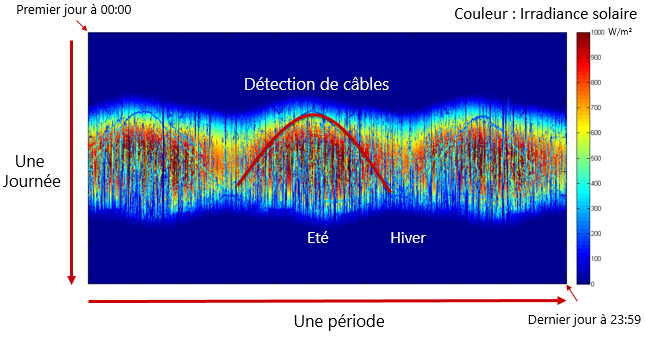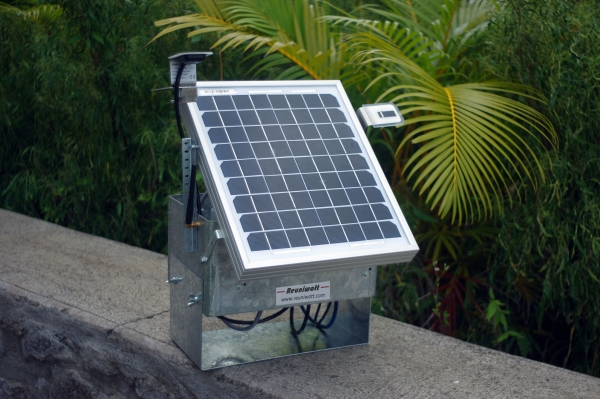The deafening silence in the aisle of a photovoltaic plant contrasts with the bustle which reigns in a gas, oil or coal power plant. Failures and technical issues are silent, which empowers the data monitoring system: one must be able to detect any anomaly involving a loss of production to fix it. Disruptions might have different origins: a tree or a cable which shade a solar panel, failures of cells or of the communication devices between sensors and data servers.
The detection of the anomalies is carried out in two stages: data collection before data analysis. Each process copes with its own difficulties. Regarding the collection phase, solar irradiation sensors give a global insight of the amount of sunshine for the plant: this data can be deteriorated by a wrong offset of the device, dirtiness reducing the solar irradiation which reaches the cells or even a general device failure. A regular maintenance of the devices might prevent partially from these measurement errors but another solution must be considered: the following pictures show how satellite images give a cloud cover map of the sky, and then by inversion, a solar irradiation map.
Using satellite images for PV system performance monitoring
This method, more approximate because images have a low resolution and therefore cannot detect the smallest clouds, can nevertheless give excellent results combined with data originating from sensors. Results are eventually stable in time thanks to sky images and accurate thanks to the sensor data. It even shows a possible device weakening by observing an increasing gap between the data of the two devices. This is the solution developed by Reuniwatt which provides a tailored climatic information system to its clients, thanks to its S3G (Sensors and Services for Smart Grids).
Independent in energy, the S3G collects data directly from the plant. It is combined with satellite data to get all the quality criteria mentionned before.
As for the analysis phase, it is essential because a large list of values is nothing more than this – a list. To extract meaning from tables of millions of values, developing a visualisation system is mandatory, as shown on the picture below (photo credit: Reuniwatt):
The use of colors showing the variation of solar irradiance lets one visualize how days change throughout the year. Summe time matches with the most vertically extensive red area (higher solar irradiance). This graph is interesting, as it enables us to detect anomalies (a cable which shades the panels here) on larger periods which could not be observed otherwise. It is therefore possible to efficiently correct the anomaly and maximize the energy production.
During the 2015 EU PVSEC conference in Hambourg, Reuniwatt CTO Nicolas Sébastien presented the pros of Big Data and remote sensing to improve plant monitoring. His presentation is available on the European Photovoltaic Technology Platform website.
We proved how relevant data monitoring systems are for a photovoltaic power plant. It is important to note that they also enable one to control its production in order to calculate its performance ratio.
To find out more about the S3G or Reuniwatt’s other PV system performance monitoring solutions, you can contact us, or directly download the S3G’s datasheet.


